Photography by Eric Chakeen
Compiled by Deidre Dyer and Leah Mandel
Styling assistance by Ryan Gale
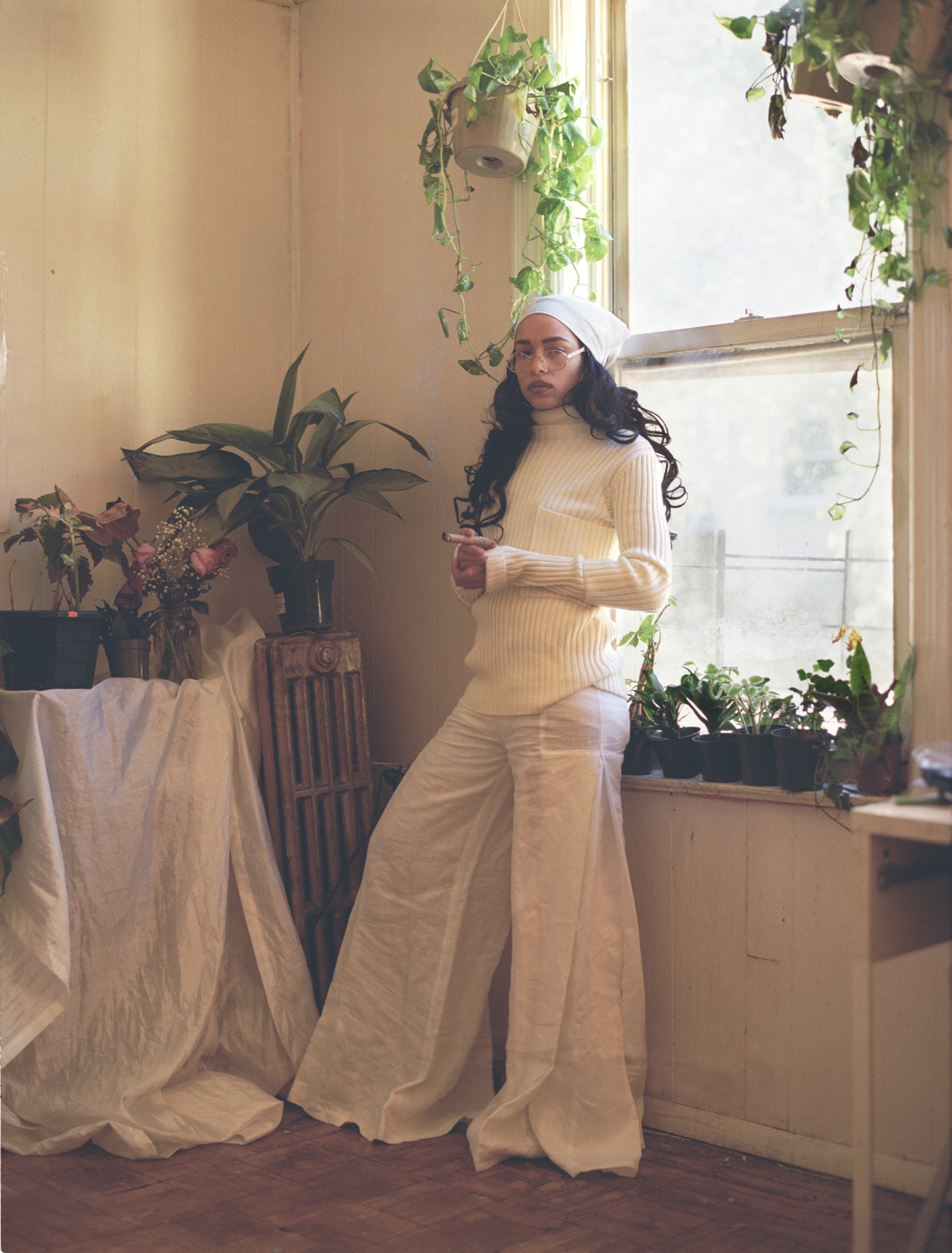 Turtleneck JOSEPH, trousers COLLINA STRADA, scarf, glasses, and jewelry NOKIA’S OWN.
Turtleneck JOSEPH, trousers COLLINA STRADA, scarf, glasses, and jewelry NOKIA’S OWN.
Princess Nokia, 24
Rapper, Santera
My religious beliefs are my birthright. I’m a Puerto Rican woman whose family has roots in Regla de Ocha, also known as Santería. I like to honor my West African and Taíno ancestry, I consider it sacred and divine. A lot of practices of Regla de Ocha come with mediumship, clairvoyance, and healing abilities. I view these abilities as gifts. My connection to Regla de Ocha comes through my mother and mother’s mother.
In our culture, we learn that the eggun — our ancestor spirit — is always around us. Ancestor worship is a big part of the practice. My eggun has been present all of my life. My mother and grandmother both died when I was a child, but because they were proprietors, their egguns were so strong, and they’ve always been able to guide me. My mother picked my name with a spiritual intention: Destiny, “what was meant to be.” She was a very special woman, and a gifted witch. She knew she had to sacrifice her life to have me. Being aware that you can give life before you die is a very powerful thing.
There’s also this beautiful pantheon of orishas — humanlike gods and goddesses. My orisha is Yemaya, the depiction of a motherly mermaid. She’s the goddess of the ocean, motherhood, and fertility. Before my mother passed away, she left me tokens of mermaids everywhere in my room. She made me a book and placed mermaids in there. She wanted me to know that I was a child of the ocean, that I am Yemaya’s daughter. It made sense from the day I was born. She left the mermaid tokens so I could understand who I was, who my mother was, who her mother was, and therefore never be lost in this world.
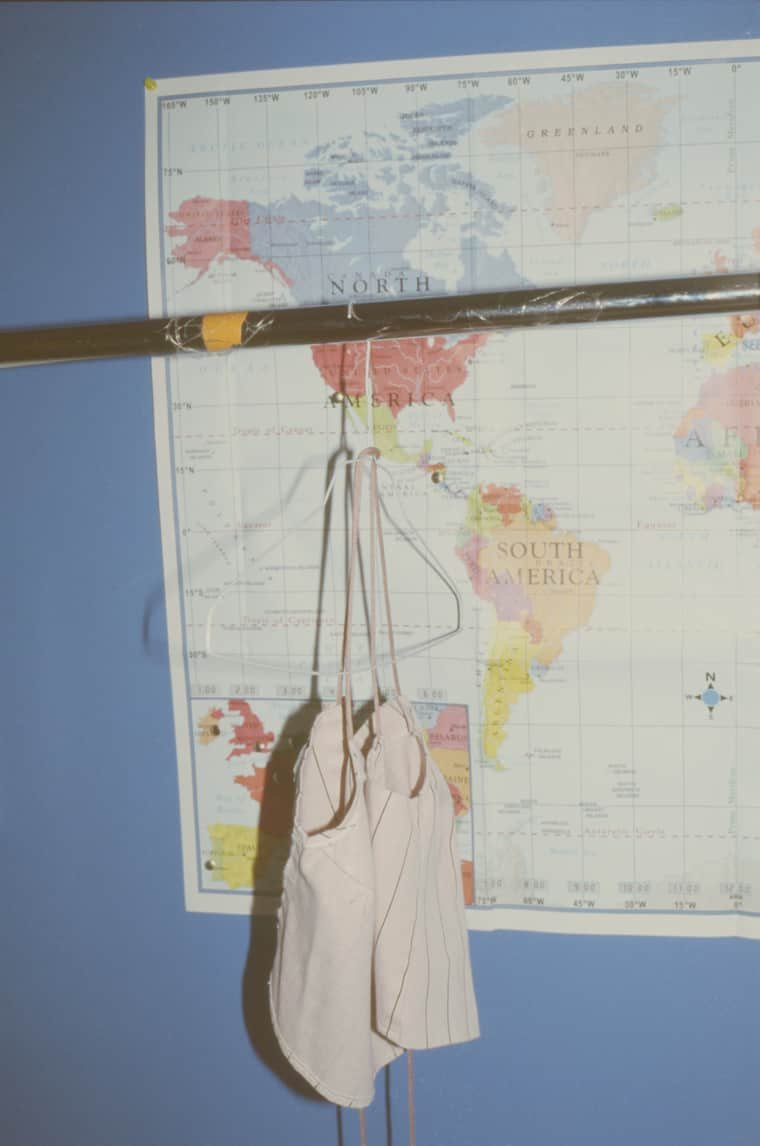 Top COLLINA STRADA.
Top COLLINA STRADA.
 Hoodie COLLINA STRADA, jumpsuit NOMIA.
Hoodie COLLINA STRADA, jumpsuit NOMIA.
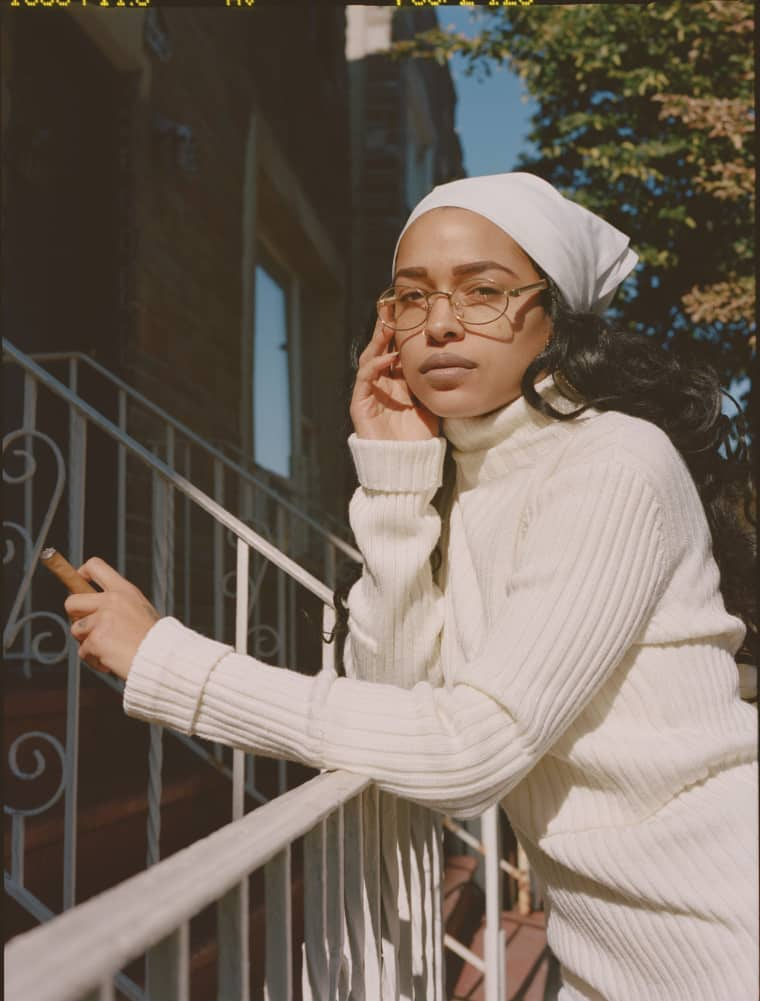 Turtleneck JOSEPH.
Turtleneck JOSEPH.

My ancestors had to keep their customs secret for fear of death or persecution, so it’s common to be secretive and discreet about Regla de Ocha. But it’s my family’s spirituality, so I don’t want to keep it secret. It’s very important to keep these traditions alive and to speak about them openly. I practice with discreteness, but I’m also open because I’m proud to be West African. I like to reclaim that beauty of the religion, and of the people. Without that, it dies. I simply cannot allow that.
I’m one of the last people in my generation of my mother’s family, and I know that I come from strong, resilient women. The indigenous woman is reflective of the modern, urbanized ghetto woman. I don’t like to lose sight of that. Because my people were oppressed, murdered, and their spirituality was taken away from them, I feel it’s my duty to exhibit it in my art. Once we touch back into that tribal shit, we can understand our potential as fabulous women and break the stigma of the urban brown woman.
As young people of color, we’re seeing this is still a racist, archaic world, and we’re aware of how strong our cultural identities make us. We want to celebrate everything about us that’s been oppressed. Our parents come from immigrant backgrounds, so they couldn’t have the dichotomy of culture due to assimilation in America. None of us want to be assimilated anymore. We’re tired of this shit. We have the luxury of being millennials — it’s up to us to make our legacies even more relevant.
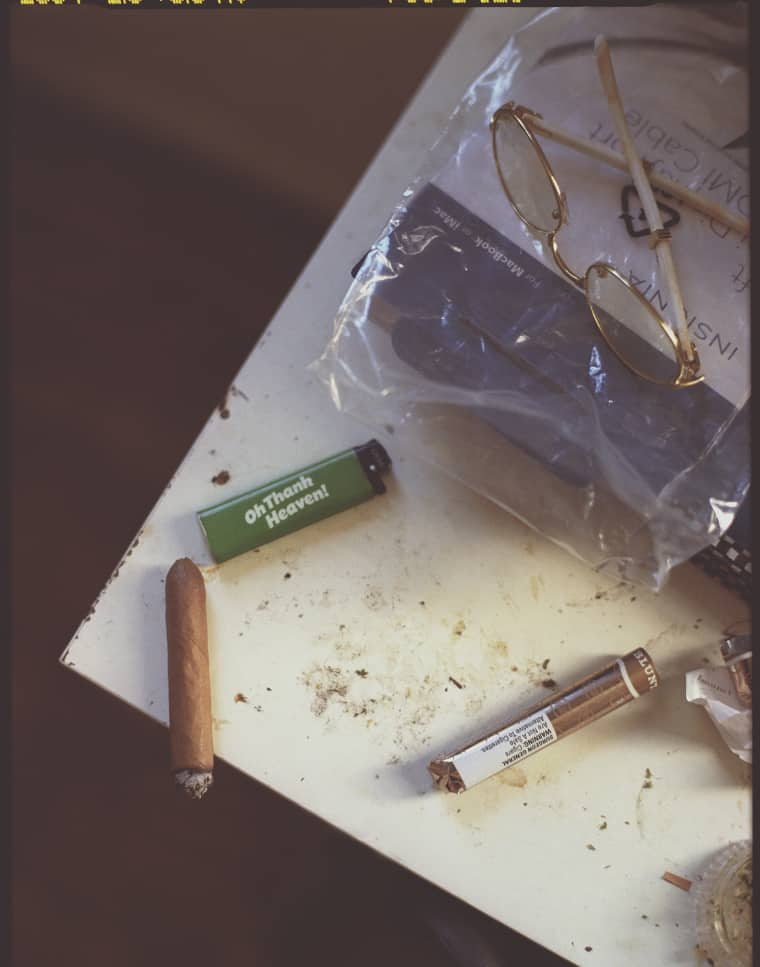
 Turtleneck JOSEPH.
Turtleneck JOSEPH.
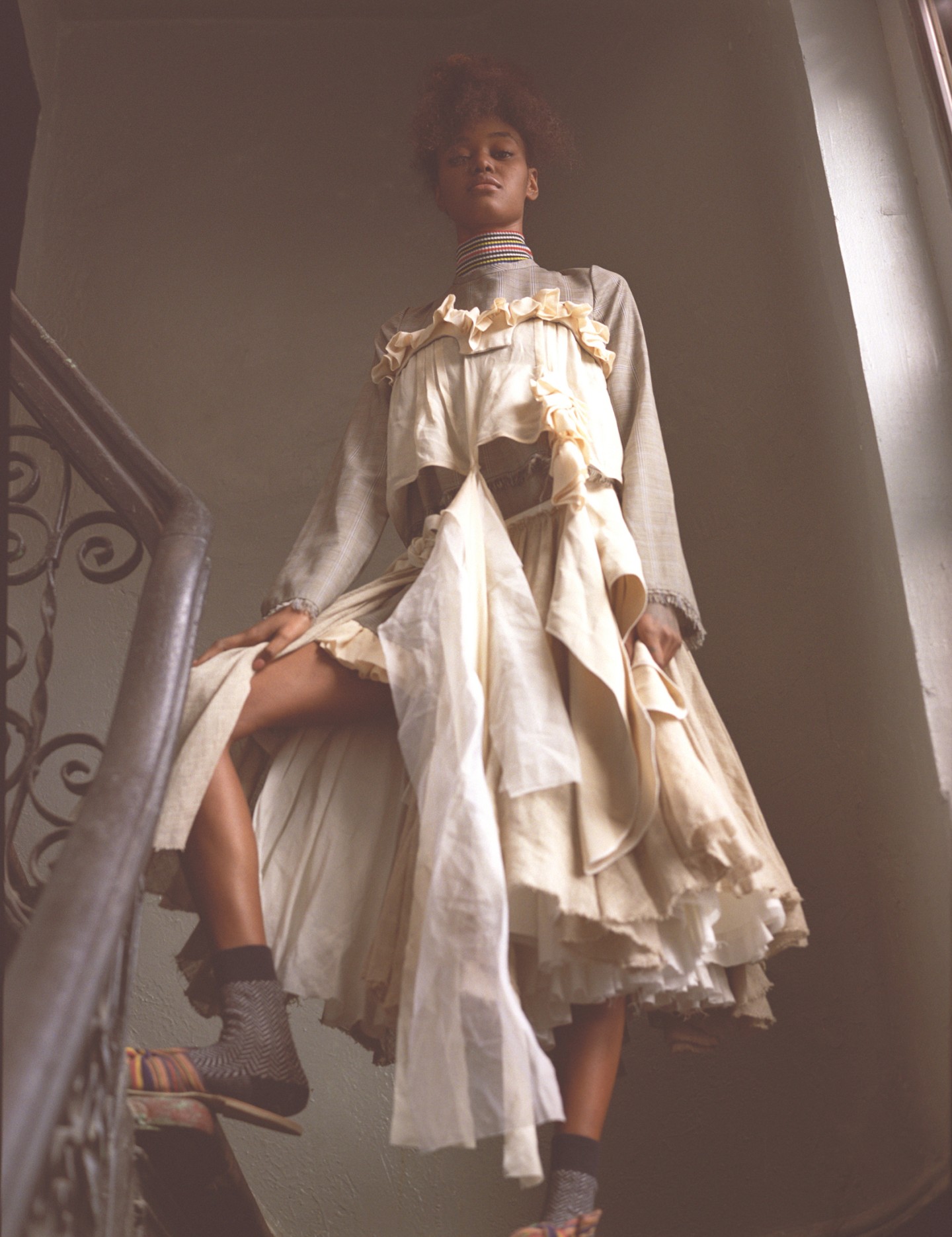 Turtleneck ROSETTA GETTY, top ANNE SOFIE MADSEN, skirt ACNE STUDIOS, sandals BROTHER VELLIES, socks CHYNNA’S OWN.
Turtleneck ROSETTA GETTY, top ANNE SOFIE MADSEN, skirt ACNE STUDIOS, sandals BROTHER VELLIES, socks CHYNNA’S OWN.
Chynna Rogers, 22
Rapper, Buddhist
I grew up in a Christian home, but no one really spoke about religion. My father is Muslim, my mother is Christian, and my stepfather was a Jehovah’s Witness who converted for my mom. My grandmother made me go to church a couple times when I was a kid, and I always had questions and nothing made sense to me. So I started looking into Buddhism when I was 13. I just stumbled upon it. I had a lot of emotional issues around that time: I was suicidal, no one could give me a good enough reason to stay alive. I felt like everything I wanted to do wasn’t going to happen for me, whether it was because of being a girl, or black, or whatever. I think subconsciously I was looking for guidance, and Buddhism was something I could go back to that would always make sense, something to look to when shit got too confusing.
Mahayana Buddhism specifically drew me in because the goal isn’t to get to Nirvana, but to be a certain kind of person. You have the option of reaching Buddhahood, which is when you allow yourself to keep being reborn in order to help other people. For me, I’m not really that pressed to go to heaven — I don’t think there’s anything up there that we don’t have down here. I’d rather keep coming back to help people and see what ends up happening to the world.

 Shoes BROTHER VELLIES.
Shoes BROTHER VELLIES.
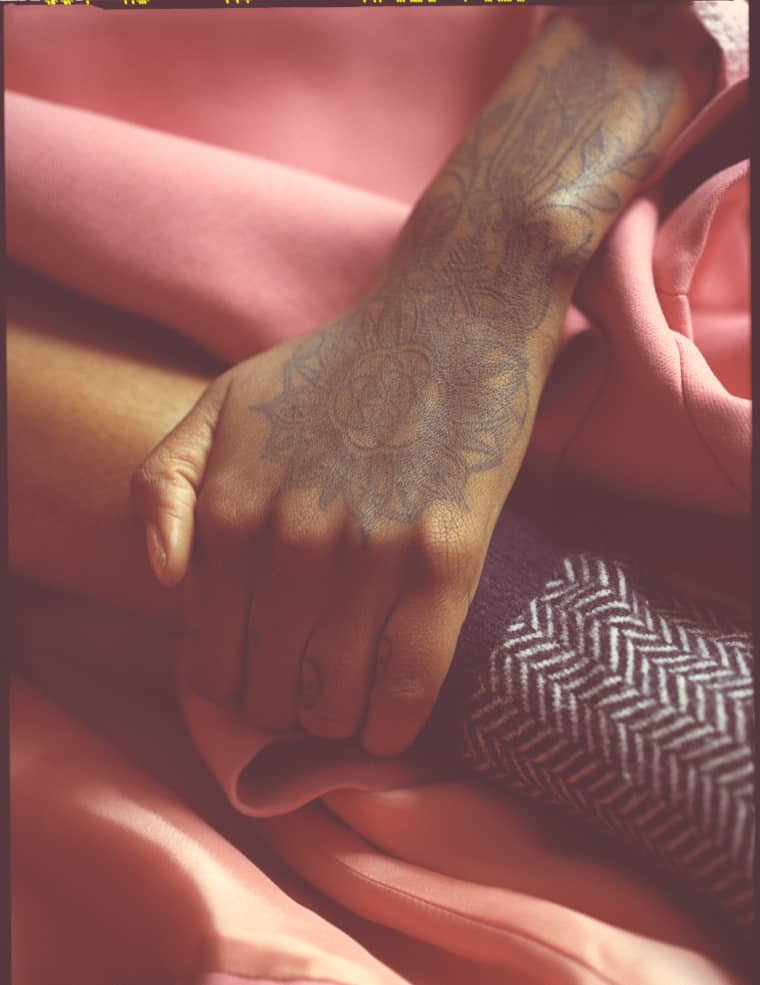 Skirt TSUMORI CHISATO, socks CHYNNA’S OWN.
Skirt TSUMORI CHISATO, socks CHYNNA’S OWN.
 Top ANNE SOFIE MADSEN, skirt CARVEN.
Top ANNE SOFIE MADSEN, skirt CARVEN.
It hasn’t always been easy. Before I got clean in May, I was into some pretty hard opiates. From fall of 2015 to May 2016, when I was peaking heaviest, I lost sight of Buddhism completely. You lose yourself in addiction — after a while you’re not even you. I didn’t feel like I was worthy of going to my temple and calling myself a Buddhist. I was like, I’m a piece of shit right now, I can’t go in there. I was letting myself get away from the responsibility. When I was deep into my bullshit, I would get signs and just ignore them. Then I shot a music video at a Buddhist temple, and just being there was part of the reason I started slowing down.
I don’t feel like Buddha is mad at me, and I’m trying to make up for something now. I don’t like the idea of a punishing god. It’s more like, “Alright, you’re with me? Cool.” When I need to re-center, I get really deep into my practices and my meditations end up being a lot longer. Everything I do is for me, but sometimes I’m not really thinking about me as a person, like my health, mentally and emotionally. Buddhism guides me towards saying to myself, Remember you matter. How are you feeling today? It always brings me back.

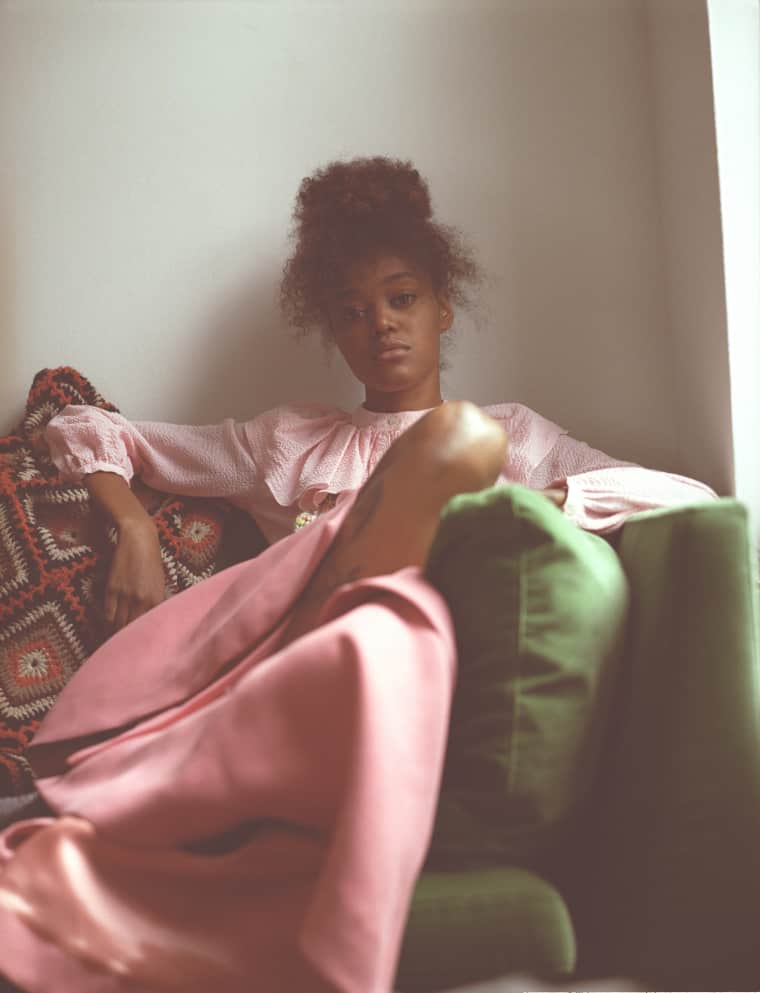 Blouse JILL STUART, knit tank ACNE STUDIOS, skirt TSUMORI CHISATO.
Blouse JILL STUART, knit tank ACNE STUDIOS, skirt TSUMORI CHISATO.
 Coat KENZO, blouse MARYAM NASSIR ZADEH, trousers SACAI, sandals BROTHER VELLIES, blanket CHYNNA’s OWN.
Coat KENZO, blouse MARYAM NASSIR ZADEH, trousers SACAI, sandals BROTHER VELLIES, blanket CHYNNA’s OWN.
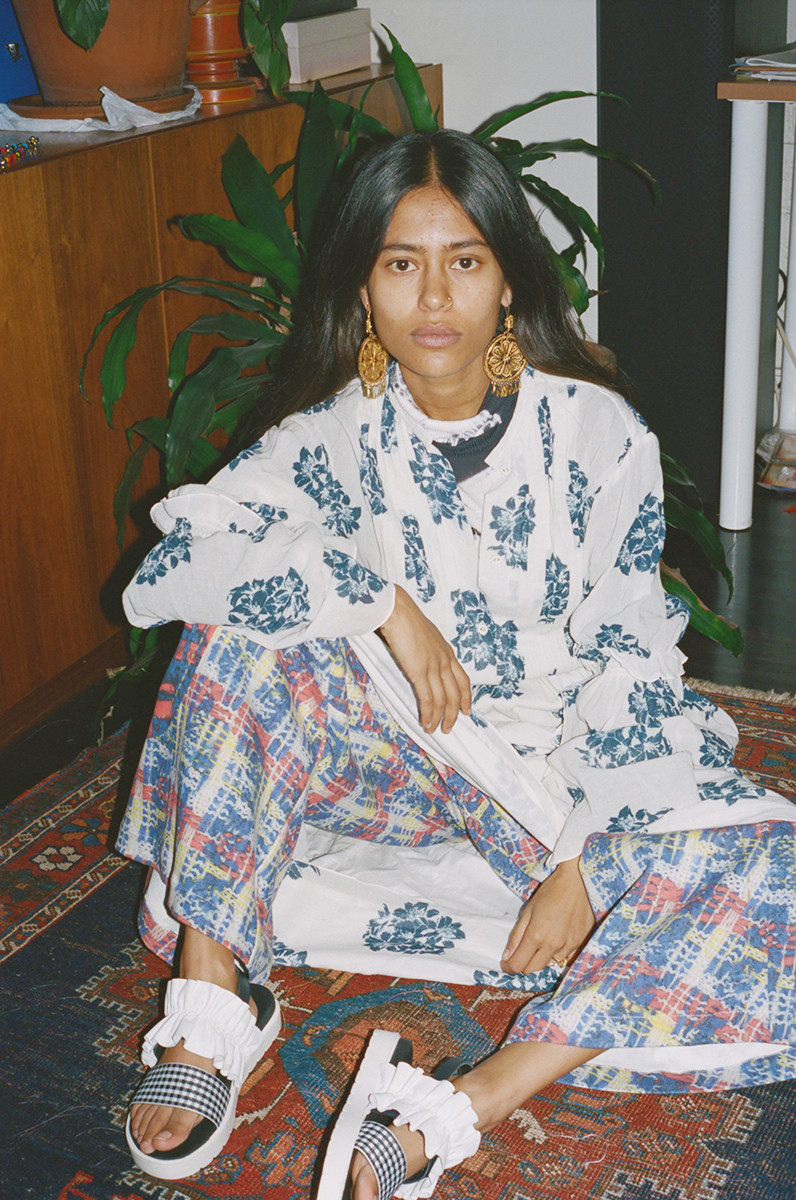 Dress KAREN WALKER, turtleneck TRADEMARK, trousers TSUMORI CHISATO, shoes MOTHER OF PEARL, earrings ARPANA’S OWN.
Dress KAREN WALKER, turtleneck TRADEMARK, trousers TSUMORI CHISATO, shoes MOTHER OF PEARL, earrings ARPANA’S OWN.
Arpana Rayamajhi, 29
Jewelry designer, culturally Hindu but religiously agnostic
In Hinduism, there are a lot of rituals. We have a prayer room, we worship twice a day, in the morning and in the evening. Nature is a huge part of Hinduism. In Nepal there are days dedicated to worshipping different kinds of animals. We worship cows, crows, snakes, dogs — there’s a day specifically to worship dogs and treat them well. Goddesses — not gods — are seen as the divine power. The biggest Hindu festival is Dashain, when Goddess Durga defeated the demon Mahishasura in an epic battle. It signifies the victory of good over evil, and we celebrate it for a month. Very early on I was taught through religion that you have to be a good person. But the way women are treated in religion versus the way women are treated in real life isn’t the same.
When I lost my father at 14, I started noticing the way people treat each other. Death is a big teacher. Death is necessary to open your heart to the world. Then when I lost my mom at 24, everything kind of fit together in a new way — the way you see the world, everything you’ve studied, everything you think you understand completely shatters. My mom had cancer. I saw her go from one of the most beautiful people in this world to seeing what death does to your body. What it means to look a certain way, how other people see you, how you see yourself — none of it matters in the face of death. Honestly, I thought I was screwed. But something changed. I’m more open to listening to people’s pain now. It was almost necessary for me to be who I am now. Despite having lost a lot, I’m happy. There’s nothing I’ve learned in life as much as what death has taught me. Death is the ultimate door to the spiritual world.
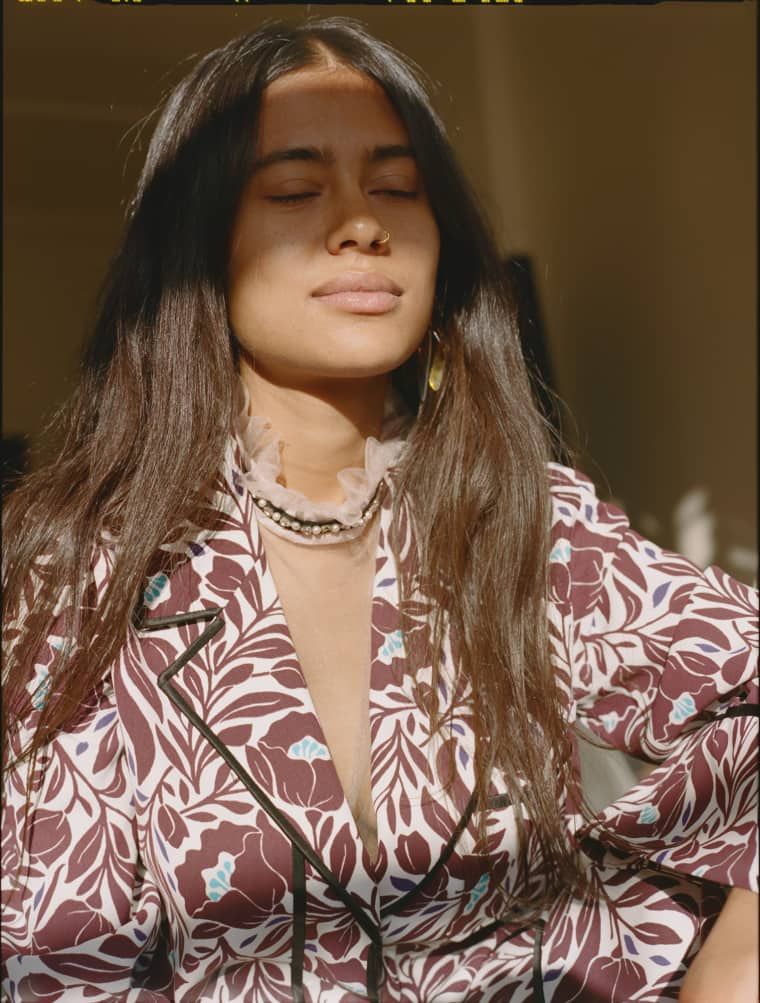 Suit CINQ À SEPT, top MOTHER OF PEARL.
Suit CINQ À SEPT, top MOTHER OF PEARL.
 Shirt OFF-WHITE c/o VIRGIL ABLOH, dress ROCHAS, custom necklace ARPANA RAYAMAJHI.
Shirt OFF-WHITE c/o VIRGIL ABLOH, dress ROCHAS, custom necklace ARPANA RAYAMAJHI.
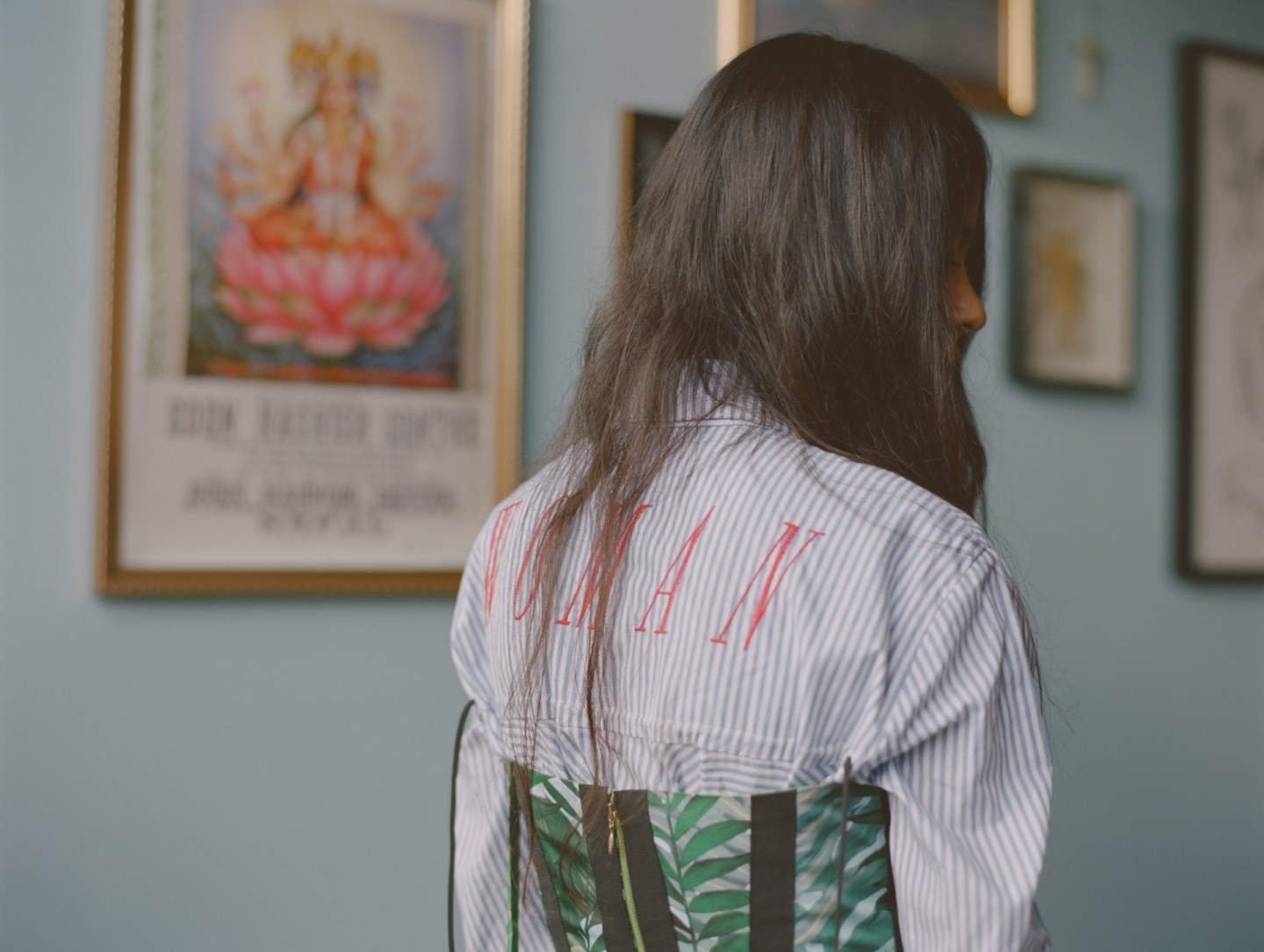 Shirt OFF-WHITE c/o VIRGIL ABLOH, dress ROCHAS.
Shirt OFF-WHITE c/o VIRGIL ABLOH, dress ROCHAS.
 Suit CINQ À SEPT, top MOTHER OF PEARL.
Suit CINQ À SEPT, top MOTHER OF PEARL.

But even people who are highly spiritual don’t want to talk about death. When I lost my parents, I started questioning: What’s the point of life, since we’re all just dying? What am I going to do in order to make myself happy? What am I going to do in order to make myself useful? For me, spirituality comes through the suffering in life, the pain you go through. I want people to openly talk about suffering. I wish social settings would allow conversations that could change our perspective on life and help us appreciate other lives, the fact that we’re alive, and free each other. I don’t want to just have a dialogue about things that I think are important, I want to be connected to myself.
I’m not attached to any concept of identity. I’ve never identified in any religious sense, and I don’t want to identify in any racial sense. I’m not spiritual because it gives me a sense of identity or community, I’m spiritual because I want to learn about myself, and hence, the world. Hopefully one day I can be so true to myself that it inspires people.
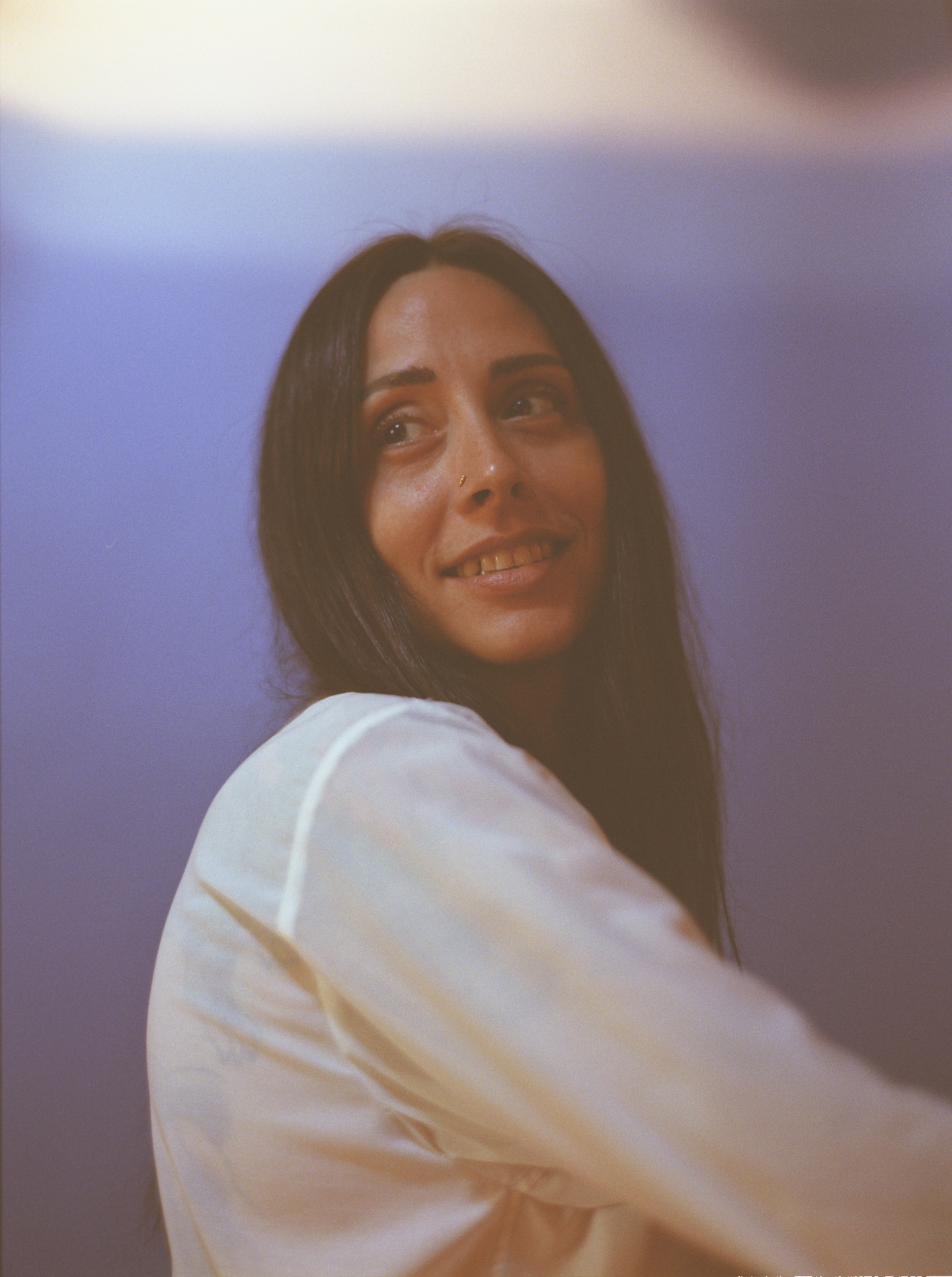 Blouse CLAUDIA LI.
Blouse CLAUDIA LI.
Rachel Howe, 37
Artist, tarot reader
Intuition goes on a spectrum, and it manifests in different ways. Since I was a child, I was very open, receptive, and empathic — basically feeling other people’s feelings. I would have these intense moments, but I didn’t have any sort of understanding of what was happening, which was actually really detrimental to me. It made me depressed and caused problems in my life. I’d always thought that tarot was interesting, but it seemed like something that I wouldn’t be able to get into. I wasn’t raised with any religion, so there was no sort of spirituality in my family. I had no support and didn’t know anyone that was into this until I was an adult.
Five years ago, I was in a long-term relationship and went through a really big breakup. There was this void, and I didn’t want to let that void destroy me. Thankfully, my friend gave me a tarot reading session as a post-breakup present. As soon as the tarot reader started, she kept saying that I was psychic and intuitive, and that I needed to learn the cards. I was open and wanting a lot of change for myself. When you lower your resistance like that, things start coming to you. After that, she basically mentored me in tarot. I’d go to her apartment, and we would give each other readings. Eventually, I just started reading for other people, and just threw myself into it.
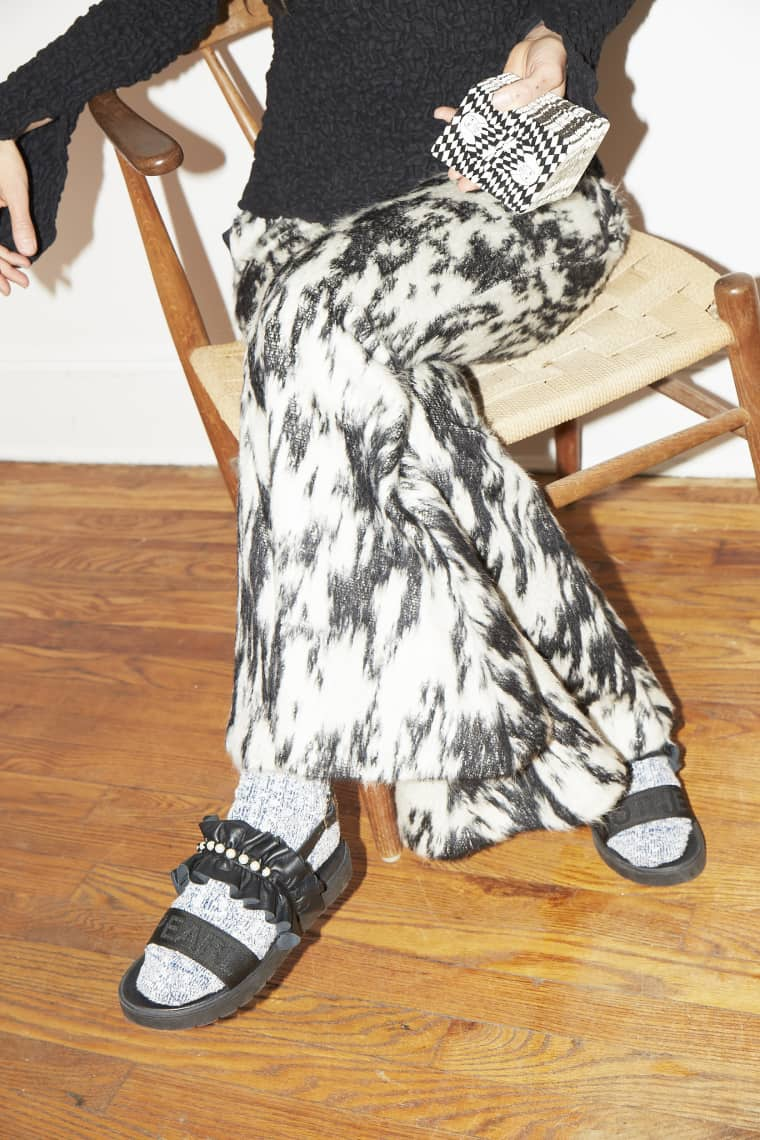 Turtleneck and pants BEAUFILLE. Socks STYLIST’s OWN. Shoes MOTHER OF PEARL.
Turtleneck and pants BEAUFILLE. Socks STYLIST’s OWN. Shoes MOTHER OF PEARL.
 Shirt CLAUDIA LI.
Shirt CLAUDIA LI.

 Coat JOSEPH, jacket EDUN, trousers CLAUDIA LI , shoes ALUMANAE.
Coat JOSEPH, jacket EDUN, trousers CLAUDIA LI , shoes ALUMANAE.
Basically, the origins of tarot are really unclear. Up until recently, it was a very secretive thing. Like witchcraft, divination was traditionally something that could get you killed. They don’t even know when the first deck was made, maybe the 1400s or 1500s. But I’m not really surprised that something as ancient as tarot is still so relevant today. When you’re tapping into the spiritual plane or this other consciousness that exists on an energetic level, there’s really no sense of time. I’m a human being the same way that a person was a human being in the jungle a thousand years ago.
But I didn’t necessarily feel any ownership of it at first. It was almost someone else’s practice that I was practicing. Now, as my relationship with tarot has evolved, I try to put my beliefs into practice every minute of my life. As a reader, you can’t go into a reading being critical or judgemental, it has to come with a loving energy. In trying to channel guidance for someone, you have to basically love them and you have to love yourself. Because you’re receiving intuition for someone else, you’re the conduit. When the intuition passes through me, and I give it to the other person, it’s going to have the residue of my own issues unless I’ve worked to resolve them.
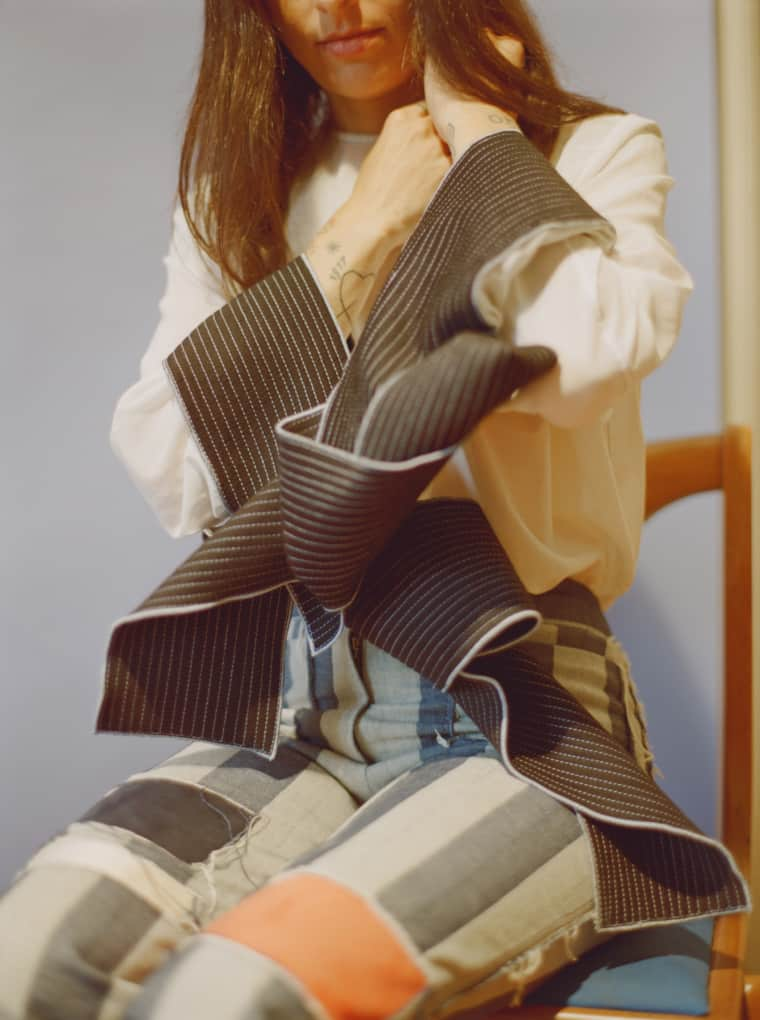 Blouse CLAUDIA LI, trousers EDUN.
Blouse CLAUDIA LI, trousers EDUN.

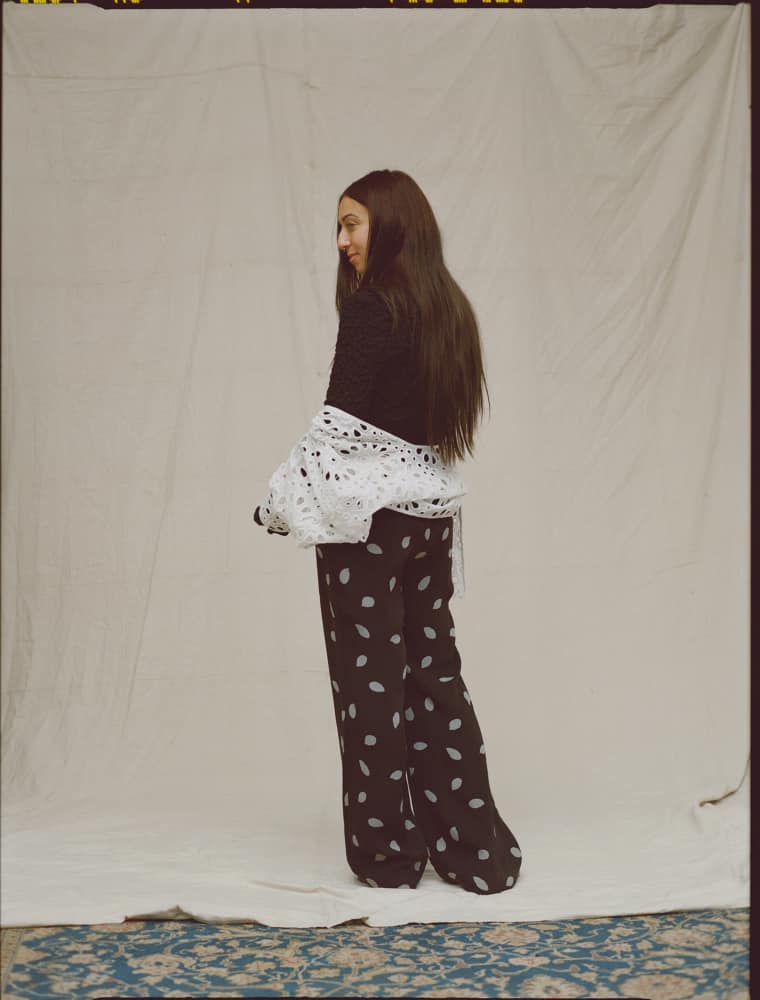 Turtleneck BEAUFILLE, jacket AWAKE, trouser MARYAM NASSIR ZADEH, shoes MOTHER OF PEARL.
Turtleneck BEAUFILLE, jacket AWAKE, trouser MARYAM NASSIR ZADEH, shoes MOTHER OF PEARL.

Tamara Santibanez, 29
Tattoo artist, Green Witch
I’ve always been drawn to the darker aspects of ritual. When I was younger, I was way into Satanic heavy metal and was staunchly anarchistic and atheistic — I rejected spirituality for a long time. I got sick when I was 18 and first moved to New York, so I went to a workshop called “Spell Crafting with the Seven Elements” led by a witch named Pam Grossman. I was nervous about going at first, but immediately everything clicked. I was like, This feels very right. Through Pam, I learned about a witch named Robin Rose Bennett and took a class with her about medicine-making. I went down a path of learning from there.
I identify as a Green Witch, which is rooted in herbalism. As a Mexican, I also identify strongly with the folk saint Santa Muerte, who’s like the patron saint of the underground — queer people, scorned women, narcos, people who are involved in illegal activity. I consider the word “witch” to be a political identity because it references times when women have been persecuted for having medical knowledge, folk knowledge, or knowledge about their own bodies. When I was confused by information about my health, or feeling helpless, it felt good to learn and do something about it. To this day, I feel more confident with alternative forms of healing than with Western medicine. It was only through things like acupuncture and herbalism that I was able to get better.
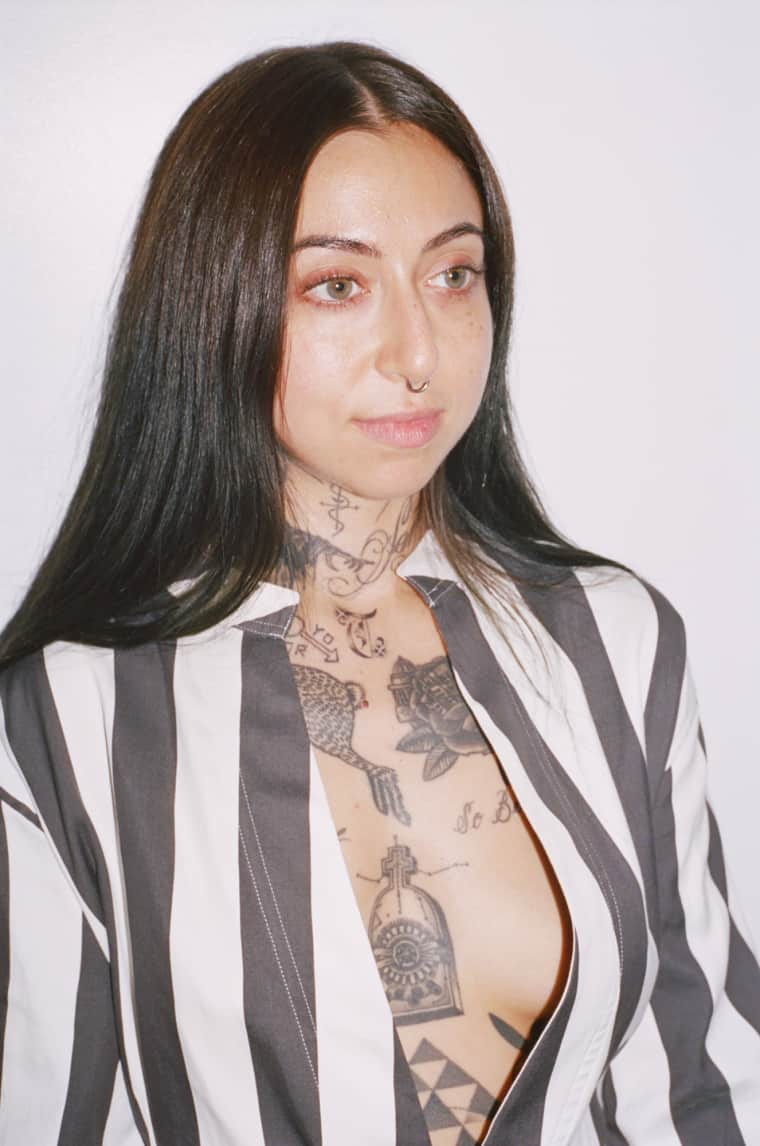 Coat JOSEPH, jewelry TAMARA'S OWN.
Coat JOSEPH, jewelry TAMARA'S OWN.
 Coat JOSEPH.
Coat JOSEPH.
I believe in the earth’s forces, I believe in the universe, I believe in energetic forces, I believe in ghosts. I’m not super formalized in my spiritual practice, but I have my own kind of ritual, from aura photography, to Reiki, to tarot readings. I have a few different altars. I’ll do rituals if I have something I’m trying to manifest or focus on. I do cleansing salt baths using different herbs and oils, cleansing smoke, candle-burning. I like knowing that if I’m stuck, or plateauing, I can do something to jump start myself in a direction I want to go. I like having knowledge not everybody has, which can help me help other people.
Our world today can be very disempowering, and a lot of people suffer from a sense of helplessness. Everything can feel really massive and oppressive, like you can’t enact any sort of change. It’s important to scale things back and look at the power you have as an individual, which is usually much more than people think. That can start with agency in your day-to-day life, but it also can be something bigger. I’ve gotten together with other witchy women that I know, and we talk about what’s going on in the world and in politics and try to focus energy towards a direction in a larger sense. It’s also about feeling you have tools to deal with life. If I’m on the subway feeling overwhelmed, I can wear crystals, or do visualization to protect my psychic space, to create an energetic barrier around me that makes me feel protected from everyone else’s craziness. To me, magic works.